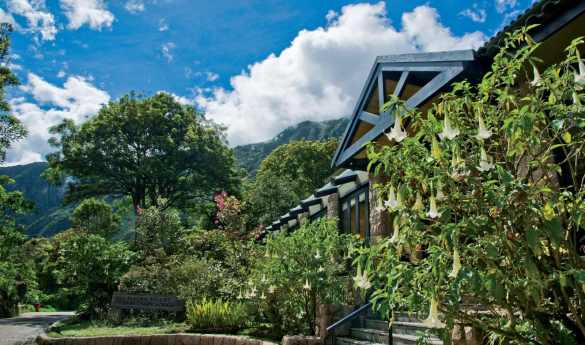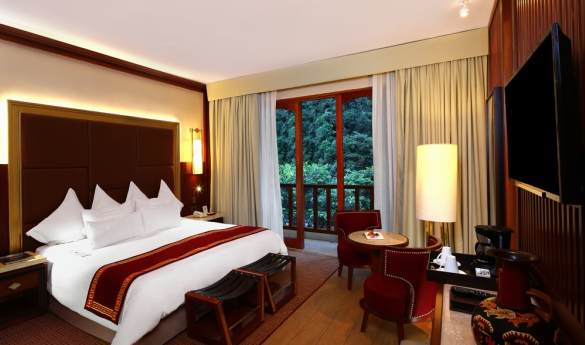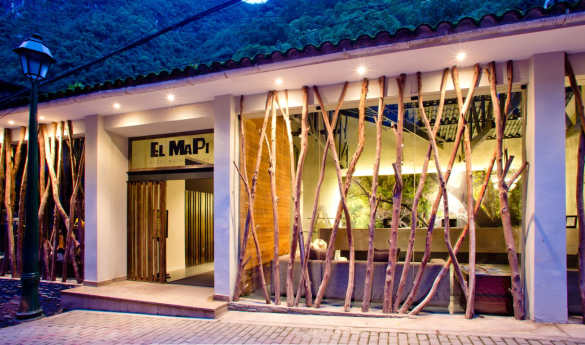Vacations in Machu Picchu, Peru
Ancient wonders await and epic adventures unfold amidst the awe-inspiring beauty of the mesmerizing Machu Picchu.

Nestled high in the misty peaks of the Peruvian Andes lies the world-renowned ancient Inca hot spot, Machu Picchu. As you spend the day traversing ancient stone steps and pathways, marveling at the site's architectural prowess, and soaking up tales of Inca civilization, there’s no doubt you’ll come away feeling moved and inspired by this archaeological treasure.
When you arrive here you might be wondering: what was Machu Picchu originally used for and when was it discovered? The site is believed to have been a form of royal estate or sacred religious grounds for the leaders of its time. These days, 'The Lost City’ remains a masterpiece of ancient architecture.
Machu Picchu was discovered in 1911, and since then, the globally acclaimed ruins have drawn visitors from every continent, with thousands traveling to the man-made wonder every year. And with its well-preserved temples, houses, and palaces which straddle the terraced plateau high above the lush valleys, it’s certainly not hard to see why.
But aside from the spellbinding visuals, what is Machu Picchu famous for, and what can you expect when you visit this iconic sight? Our experts have listed their favorite things to see and do at Machu Picchu so you can plan an unforgettable trip.
Before we dive in, it’s important to note that you must visit Machu Picchu with a guide and secure a permit before you arrive - but don’t worry, our travel consultants can help with this.
Things to see and do at Machu Picchu
Trek the Inca Trail
For those wondering how to visit Machu Picchu, the Inca Trail is by far the most popular way to get to the site.
One of the most well-known hiking trails in the world, tackling this quintessential route is a sure-fire way to make sure your visit to Machu Picchu is one to remember.
This moderate-difficulty hiking trail beautifully shows off the sheer variety of Peru's landscapes, taking you through the snow-capped Andes and leafy rainforests, and ending at the breathtaking ruins themselves. For the most authentic experience, opt for the four-day classic route which leads you along the same paths ancient messengers would have used to travel to and from the citadel. There is also a two-day option for those keen to combine a trip to Machu Picchu with another destination in Peru.
If you do plan to take on the Inca Trail, our travel specialists will handle all the admin, from finding you a licensed trekking operator to helping you secure a permit.
While this is the only hiking route that ends directly at the ruins, there are several alternative routes, such as the Lares Trail, each offering its own unique charm.
Marvel at the Inca stonework
As one of the oldest surviving Inca sites, it's no wonder that Machu Picchu contains some of the finest examples of Inca stonework still around today.
Wander through the site and you'll notice that the stonework isn't particularly decorative, with many buildings made up of simple stones with no engravings. However, the skill of the Inca craftsmen who built Machu Picchu is something to marvel at as each stone is cut to measure, all precisely slotted together without the need for mortar.
The Temple of the Three Windows at Machu Picchu is a fascinating display of this kind of stonework that enchants visitors with its enigmatic past. Its name derives from the three trapezoidal windows that adorn each wall, each carefully carved and fitted together.
As you stand before this remarkable example of Inca ingenuity and craftsmanship, not only are you treated to breathtaking views of the Andes landscape, but you also can't resist being captivated by the intricate stonework and the air of mystery that surrounds this ancient place of worship.
Explore the terraces
As well as the iconic architecture, the sheer scale of Machu Picchu remains one of its most outstanding qualities. Nowhere is this more evident than in the agricultural terraces that surround the site, cascading down the mountainside.
The Incas built these giant stair-like structures so they could use the land around Machu Picchu for agriculture, with the network of terraces acting as a vast drainage system, preventing crops from getting too much water during the rainy months. The intricate terraces are also one of the main reasons we can still visit Machu Picchu, preserving this ancient site from centuries of landslides.
Aside from their intriguing cultural heritage, the impressive terraces offer a dreamy view, creating a striking visual effect, and it's impossible to imagine Machu Picchu without them.
Visit the Intihuatana
Amongst the characteristically simple architecture, there are some sculptural and more detailed pieces to spot at Machu Picchu, such as the Intihuatana stone.
This ancient plinth sits at the highest point of Machu Picchu, inside the Sacred Plaza, and is open from 7-10 am. Still standing strong, it’s thought that the intricately carved pillar served as a solar clock and ceremonial centerpiece for people of its time.
Meticulously designed and perfectly aligned to capture the sun's rays during specific solstice events, the precision and craftsmanship displayed in both placement and shaping of this sacred stone are a testament to the Inca's advanced architectural and astronomical knowledge.
When is the best time to visit Machu Picchu?
If you’re not familiar with Peru’s wet and dry seasons, you may be wondering when to visit Machu Picchu.
April and May are ideal times to travel before those summer crowds set in, but these months can still bring occasional rainfall, so don’t forget your raincoat. June, July, and August are the most popular months to visit Machu Picchu, and while the site will be much more crowded, the weather will also be sunny and dry, but not too hot – perfect for spending the day wandering around.
If trekking the Inca Trail is high on your priorities, you'll be a bit more restricted on when you can visit. The trail itself is open most of the year but is closed in February for annual maintenance - although you can still take the Inca Rail train up to Machu Picchu at this time. The hike can also be more challenging during Peru's rainy season between November and March, so we'd recommend a visit between May and September.
Our travel specialist, Julie Norton, offers her expert advice on how to make the most out of your time at these magnificent ancient ruins.
“While everyone who first visits Machu Picchu must do so with a guide, we also recommend that more adventurous types return to explore the site the following morning at their leisure and also hike up to one of the two amazing vista points (either Huayna Picchu or Machu Picchu Mountain) that look out over the lost city from a bird's-eye perspective.”
Where is Machu Picchu located?
So, where is Machu Picchu? This enthralling site is located just outside of Cusco, the ancient capital of the Inca Empire in southeast Peru. Cusco is a wonderful base for visiting Machu Picchu, but we'd also recommend setting aside a few days to explore the city itself, too. From discovering even more intriguing ancient ruin sites such as Sacsayhuaman to indulging in delicious local cuisine at traditional restaurants, there’s no shortage of exciting things to do in Cusco.
From Cusco, you can enjoy a scenic three-hour train ride through the Sacred Valley to Aguas Calientes, a town often referred to as 'Machu Picchu city' in light of how close it sits to the ruins. From here, you can take a 30-minute bus to the site itself.
Want to explore all that Peru has to offer? Our Limitless Peru tour combines time at Machu Picchu with other top-class destinations like Cusco and Lake Titicaca so that you can tick multiple places off your bucket list in one trip.
Meet our specialists
Why Scott Dunn for Machu Picchu Vacations?
Unique to You

- We listen to your travel goals and craft unique trips that are personalized to you.
- We’re with you every step of your life’s travel journey, from honeymoons to family trips and beyond.
Seamless Service
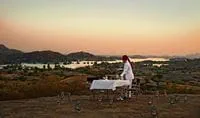
- Global offices in the UK, US, and Singapore for 24/7 seamless service.
- We offer flexibility if your plans change so you can book with confidence and peace of mind.
Carefully Curated Collection
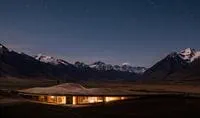
- We’ve curated an elevated collection of accommodation, experiences, and guides.
- Committed to fostering close global relationships to continue bringing you unique experiences.
Luxury in Every Sense

- We deliver a sense of luxury that matters most to you.
- Awarded Condé Nast Traveler’s Top Travel Specialists in the World 12 years in a row.
